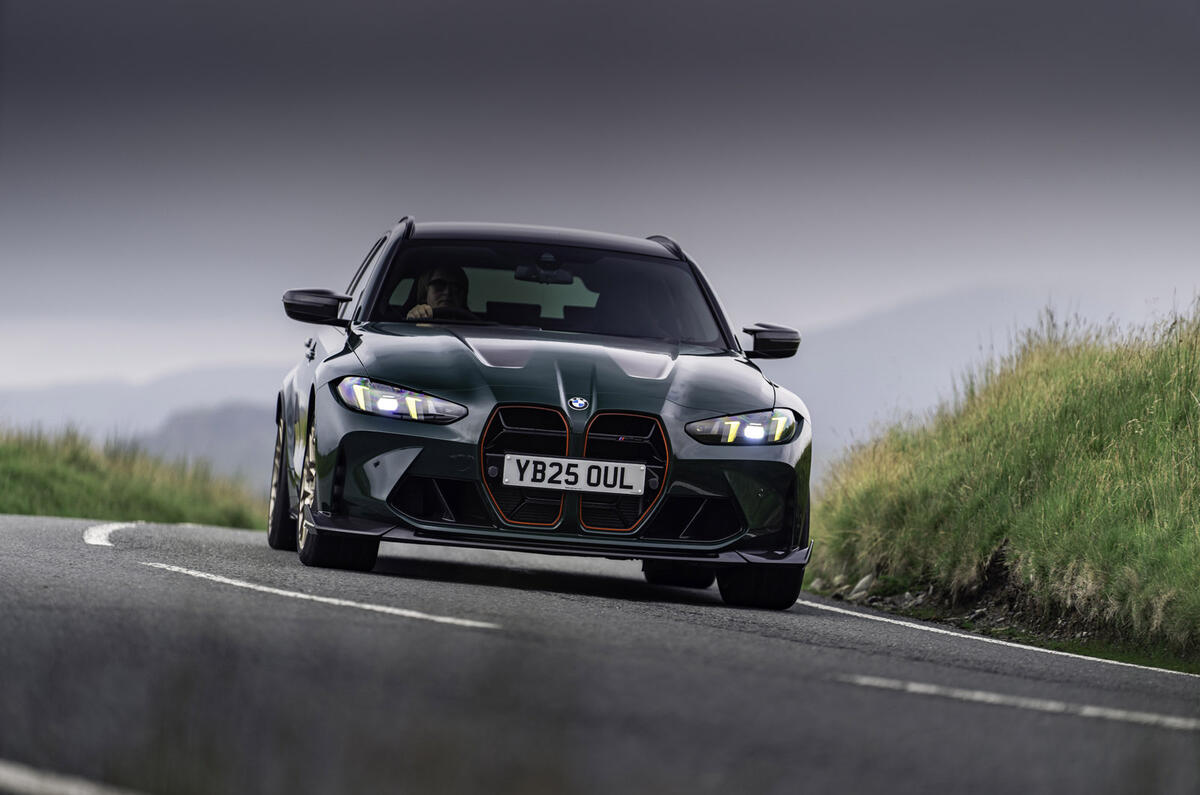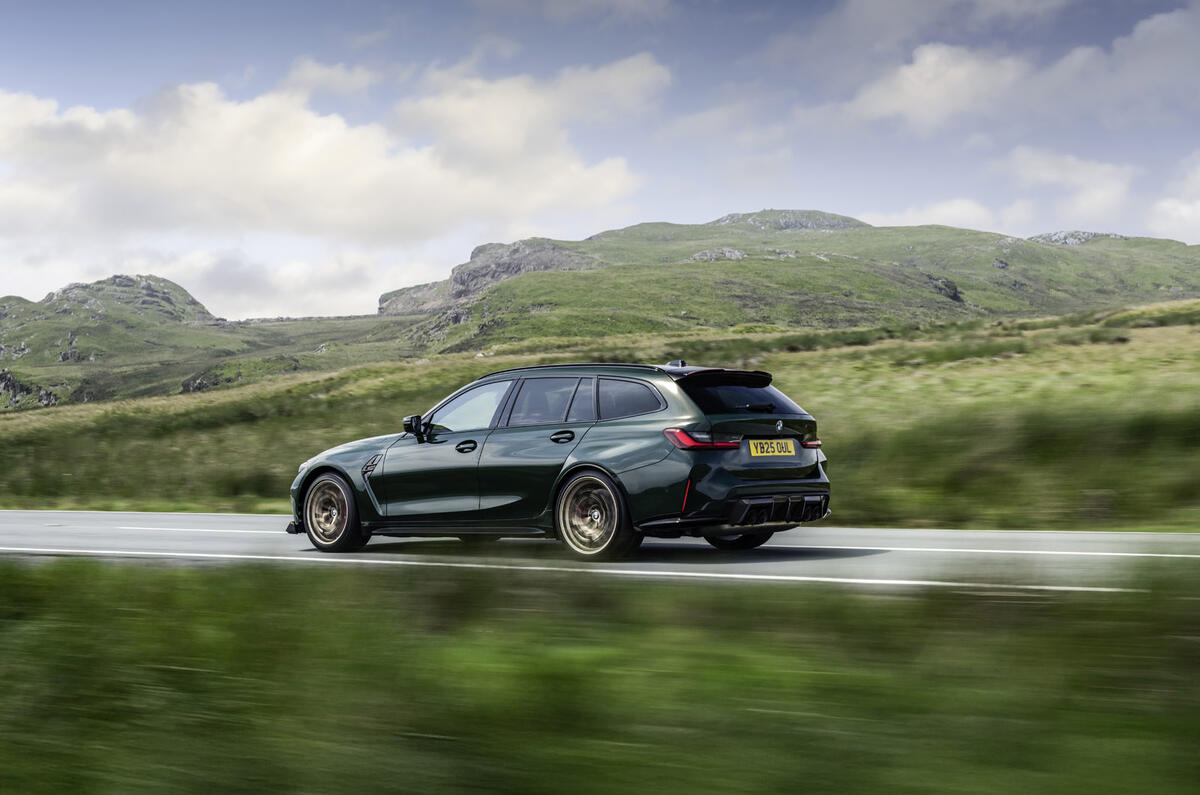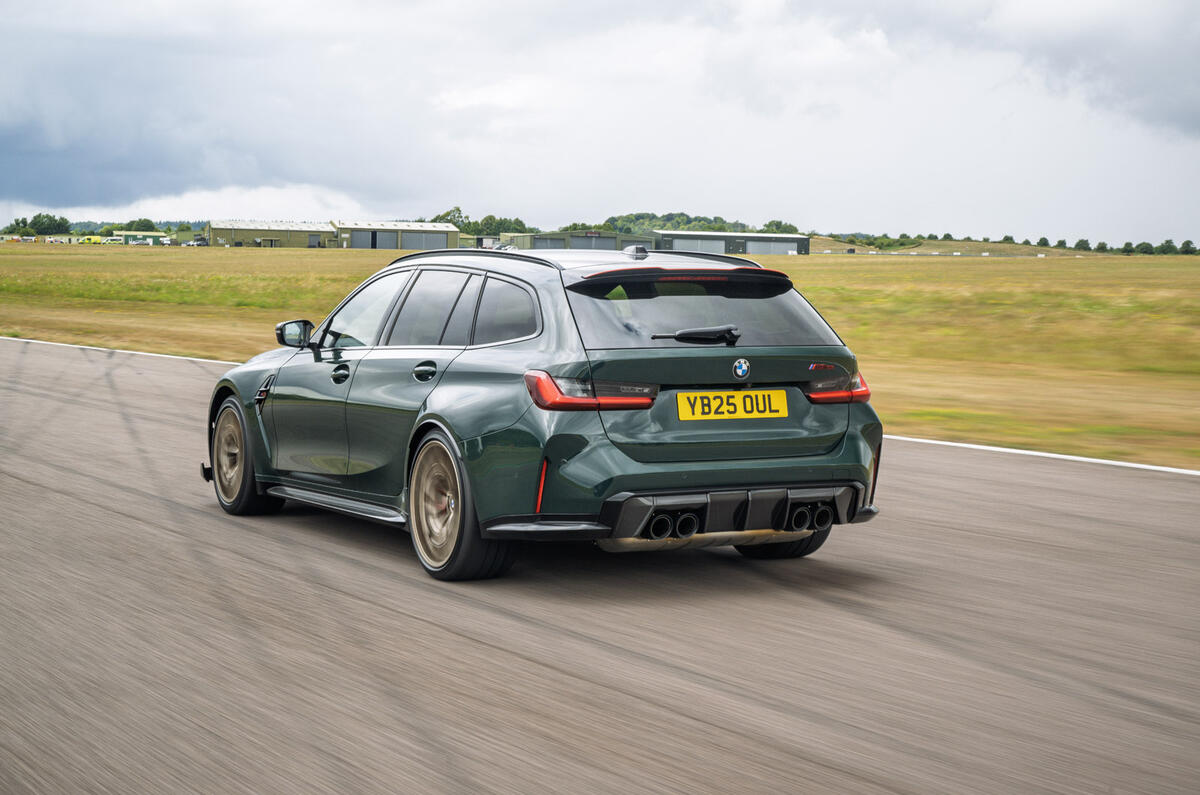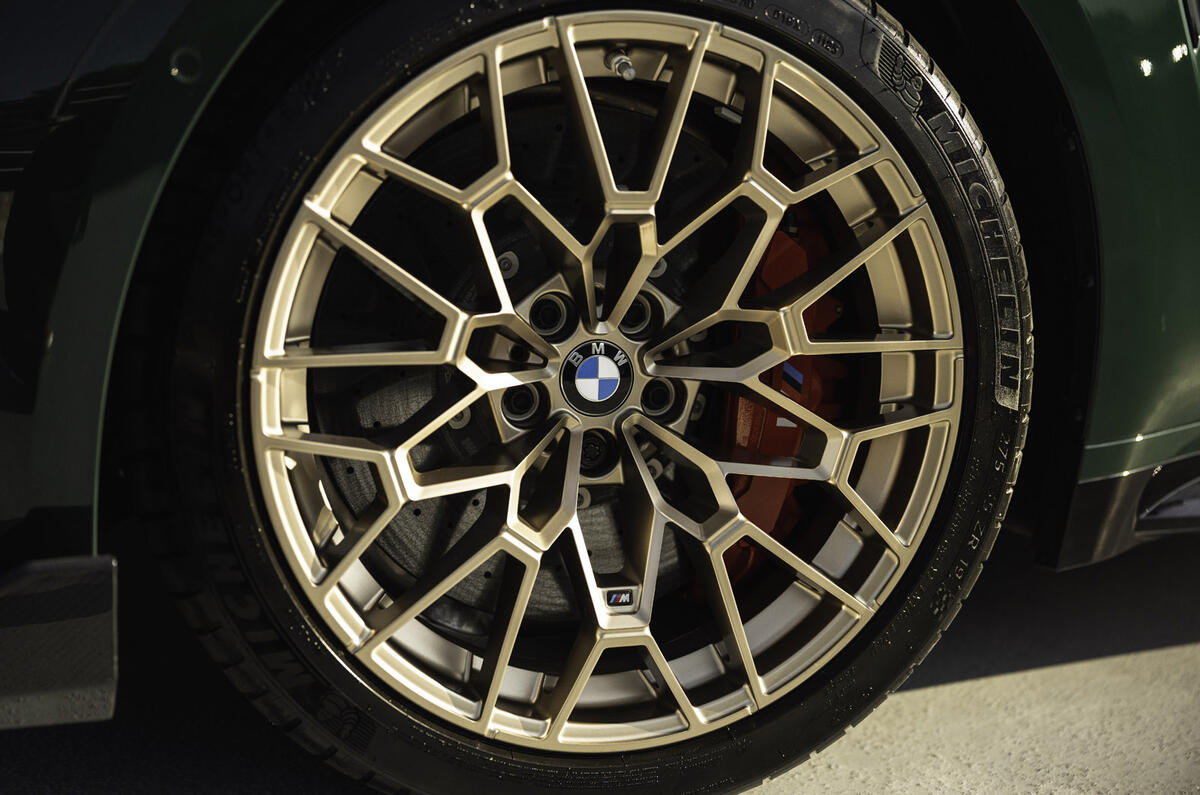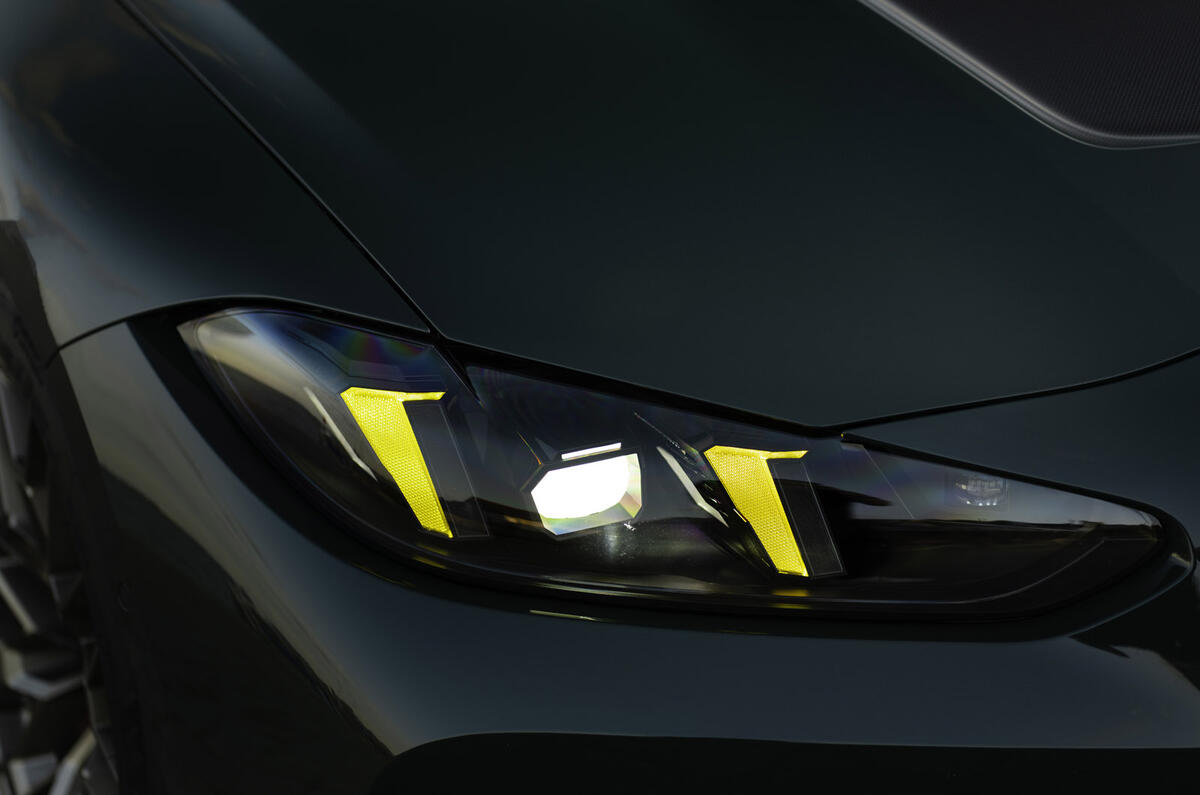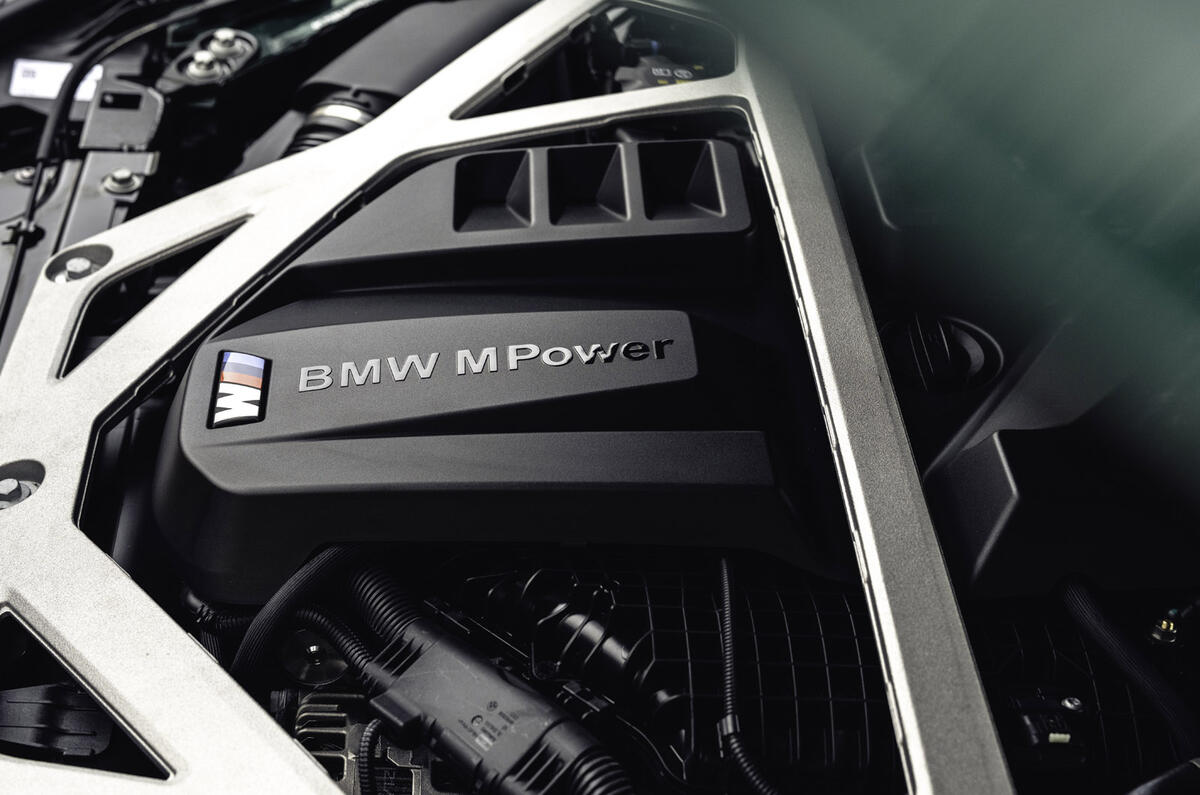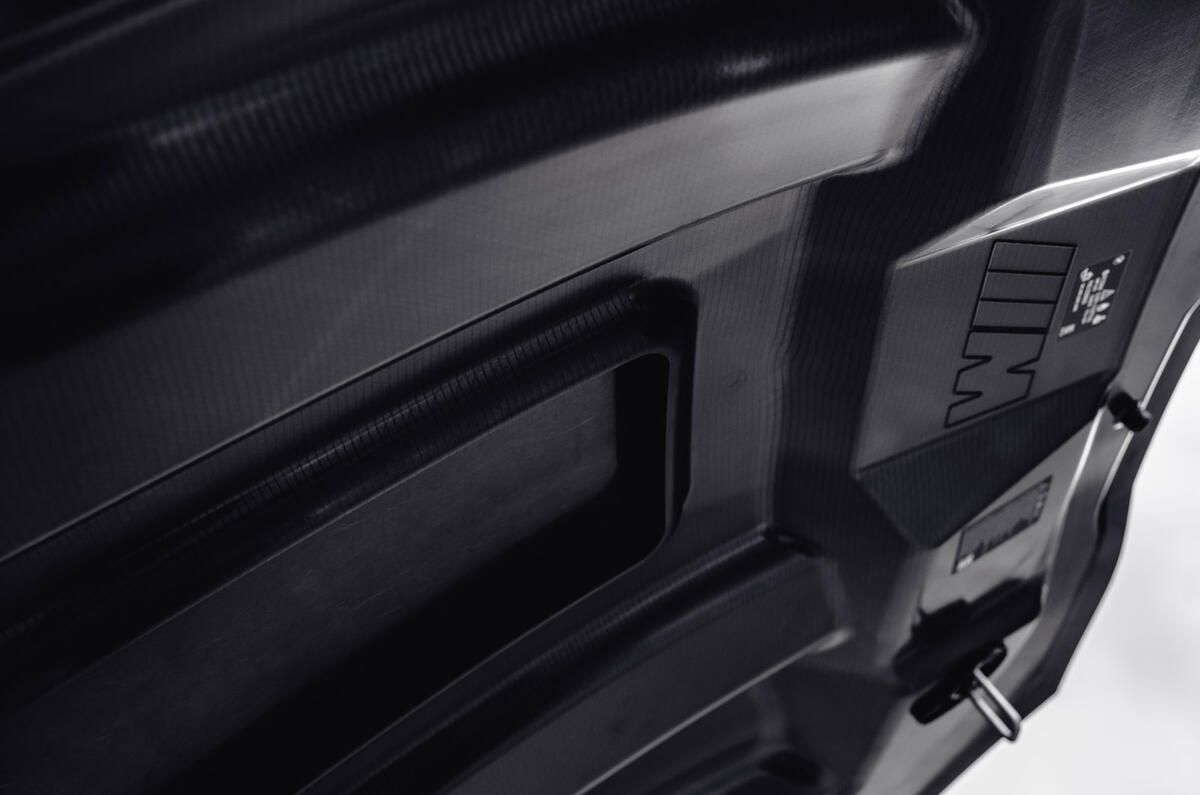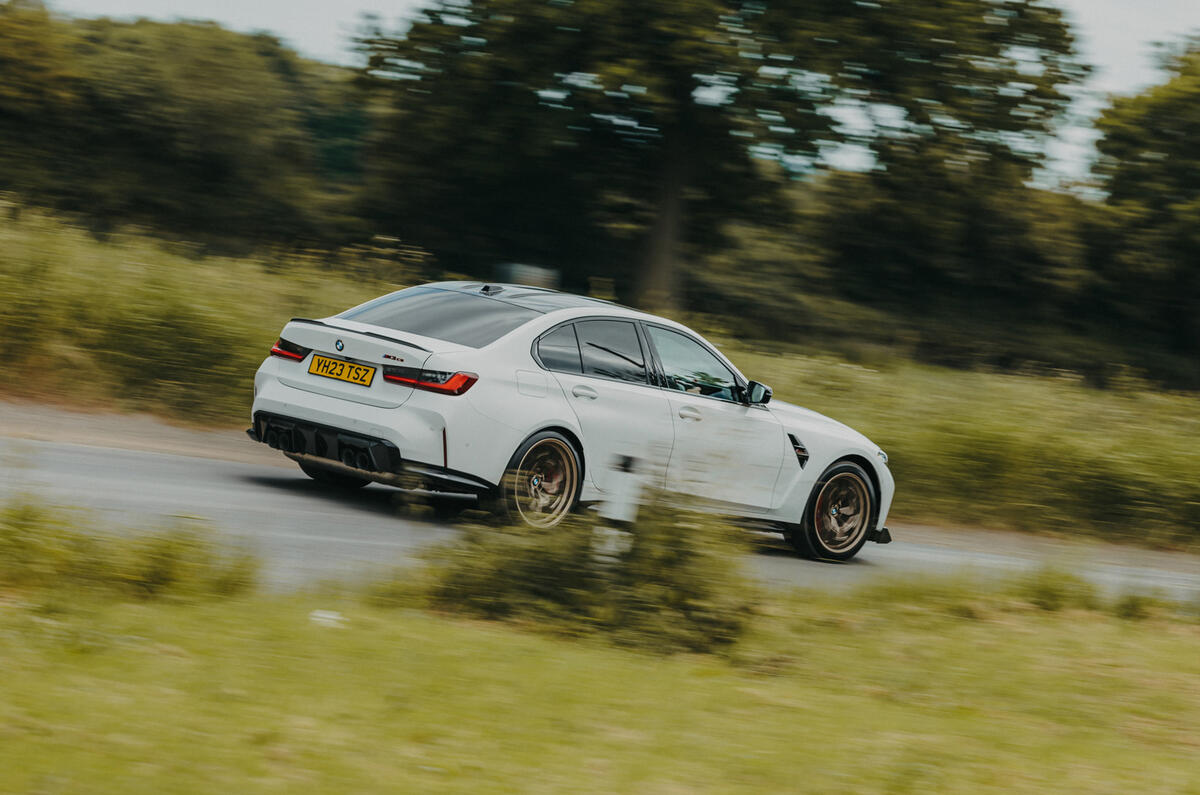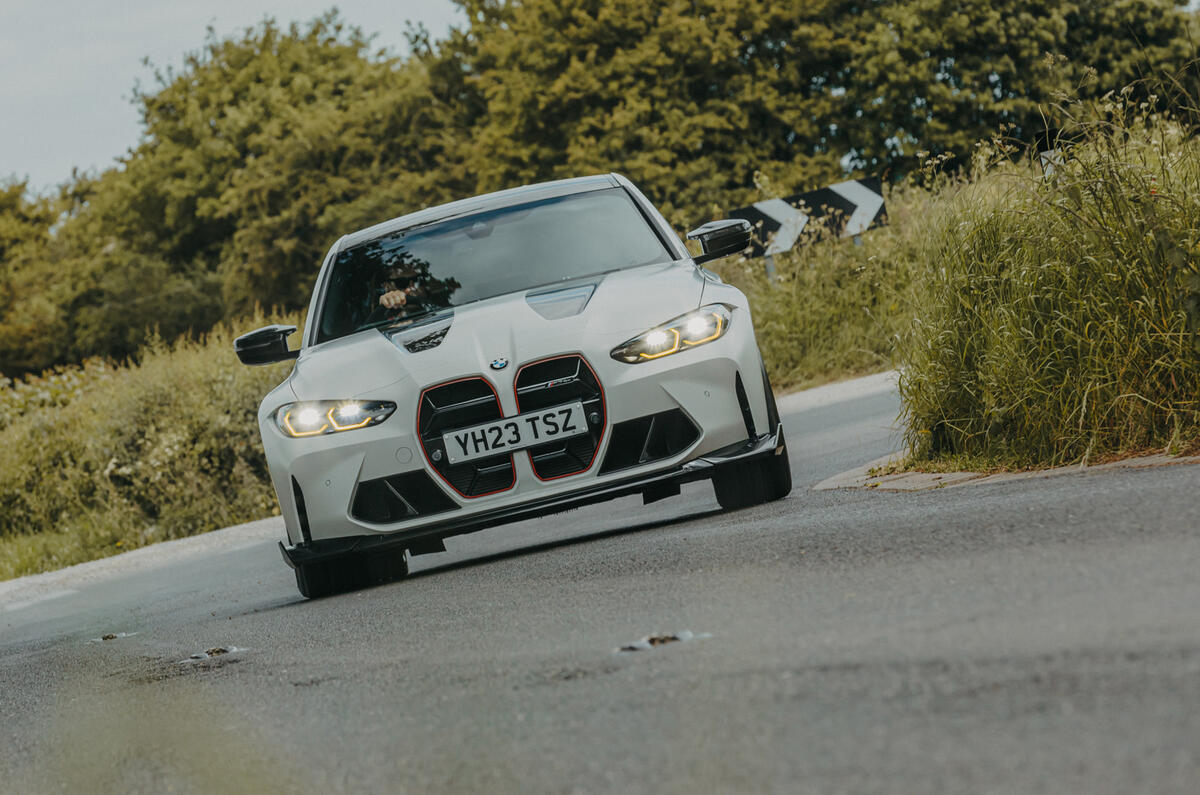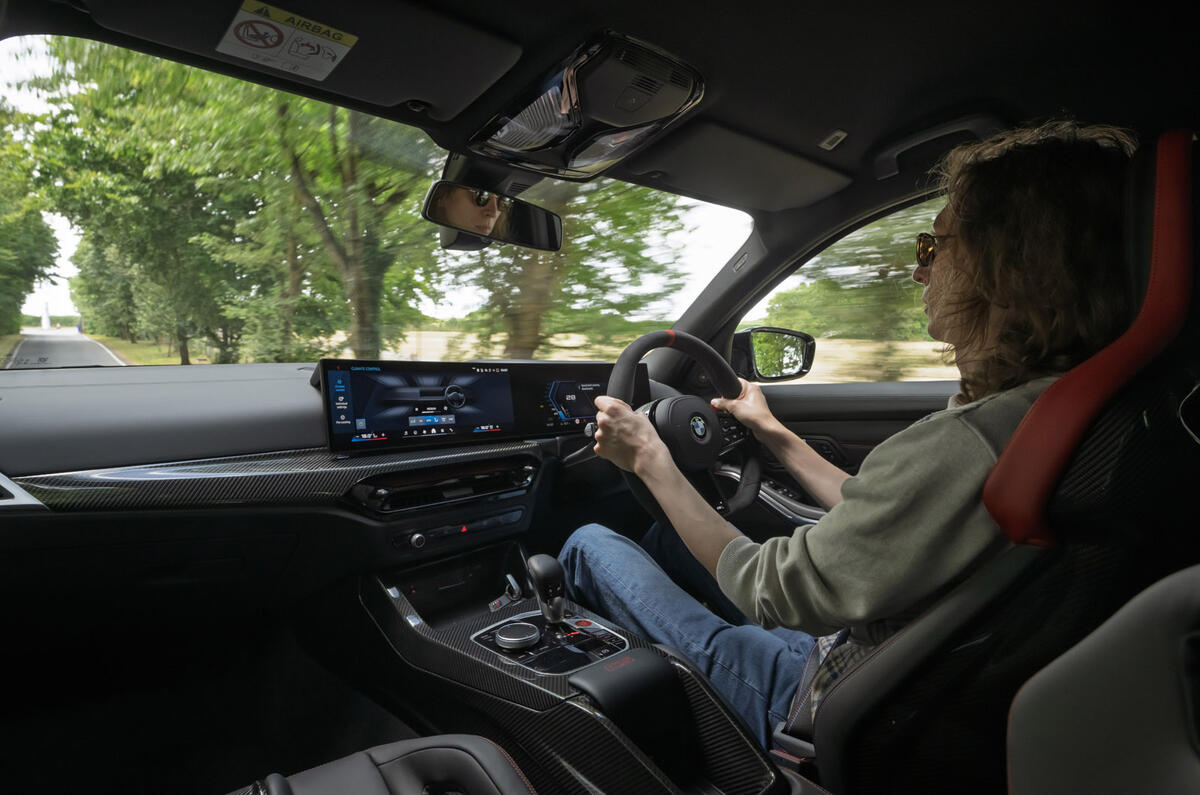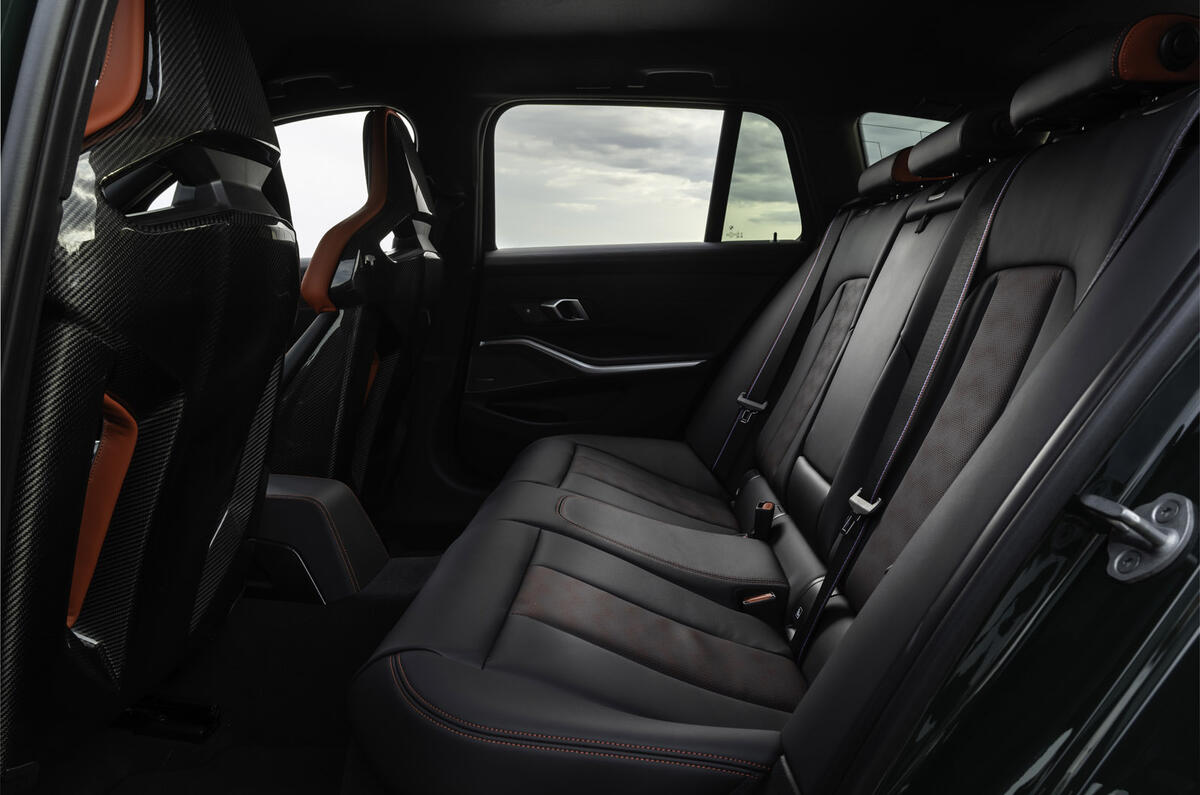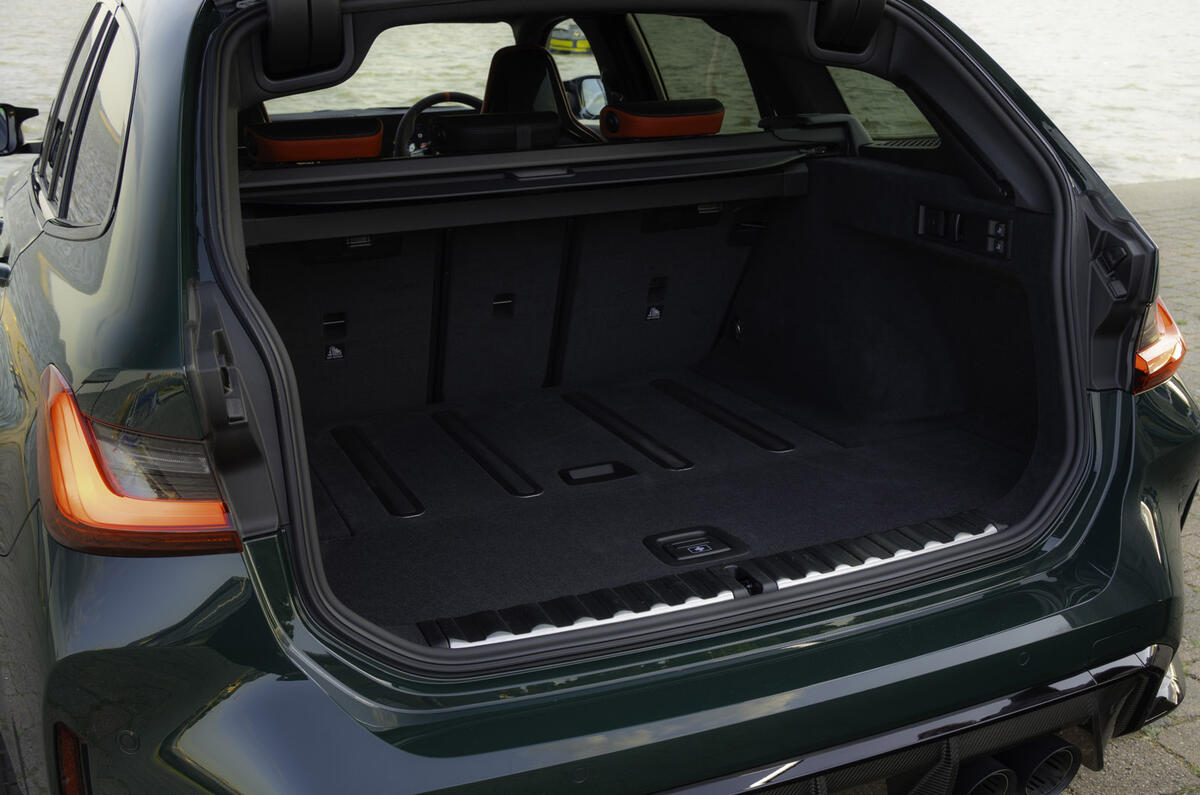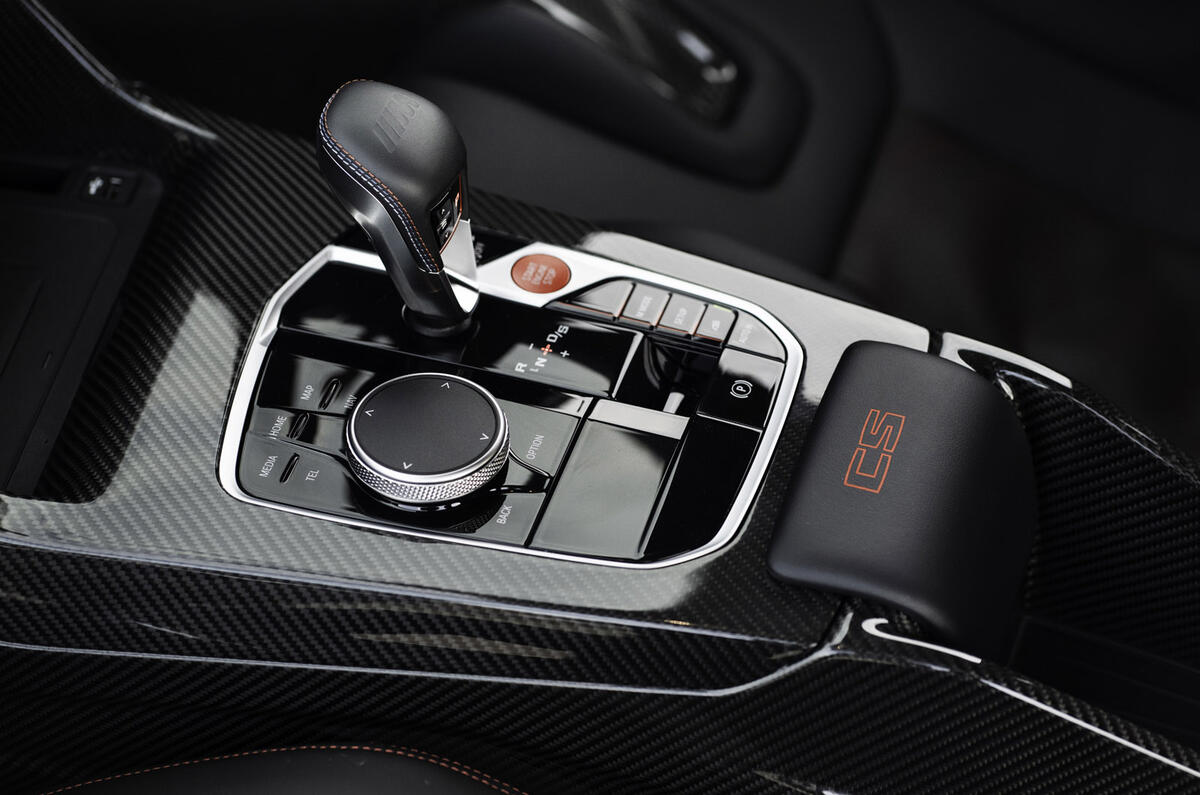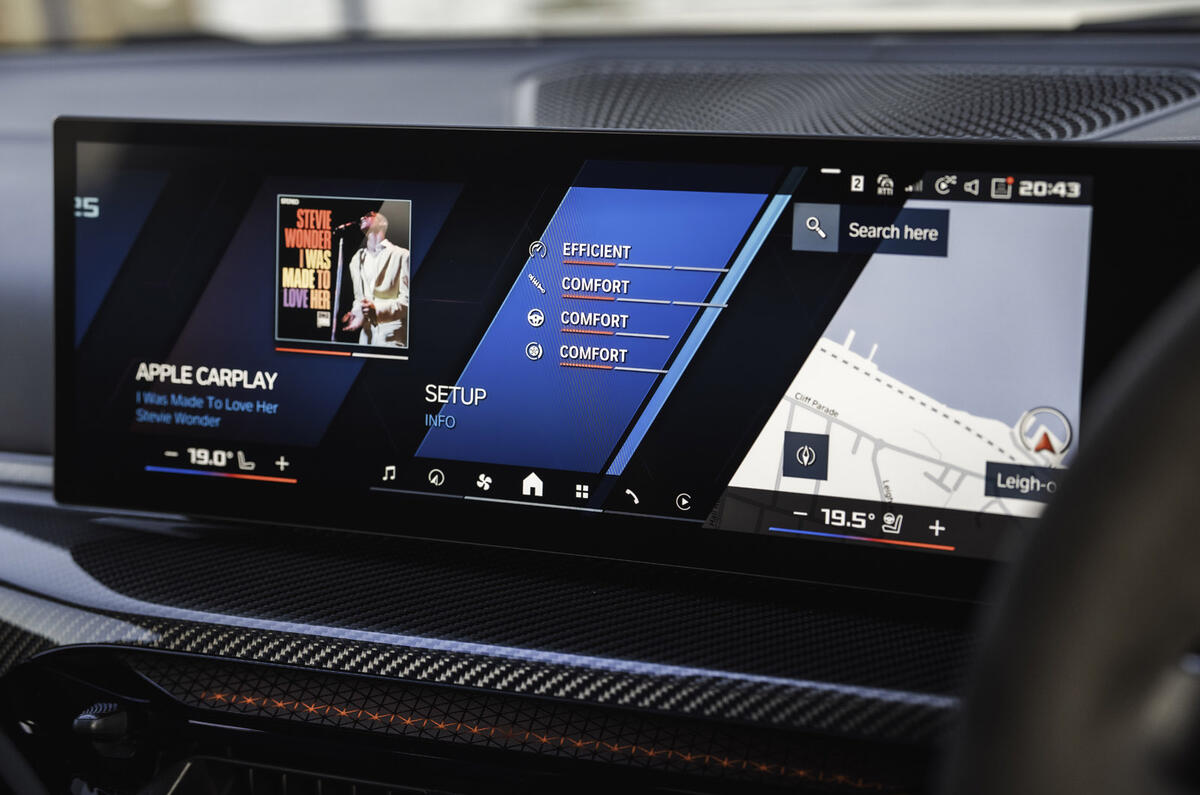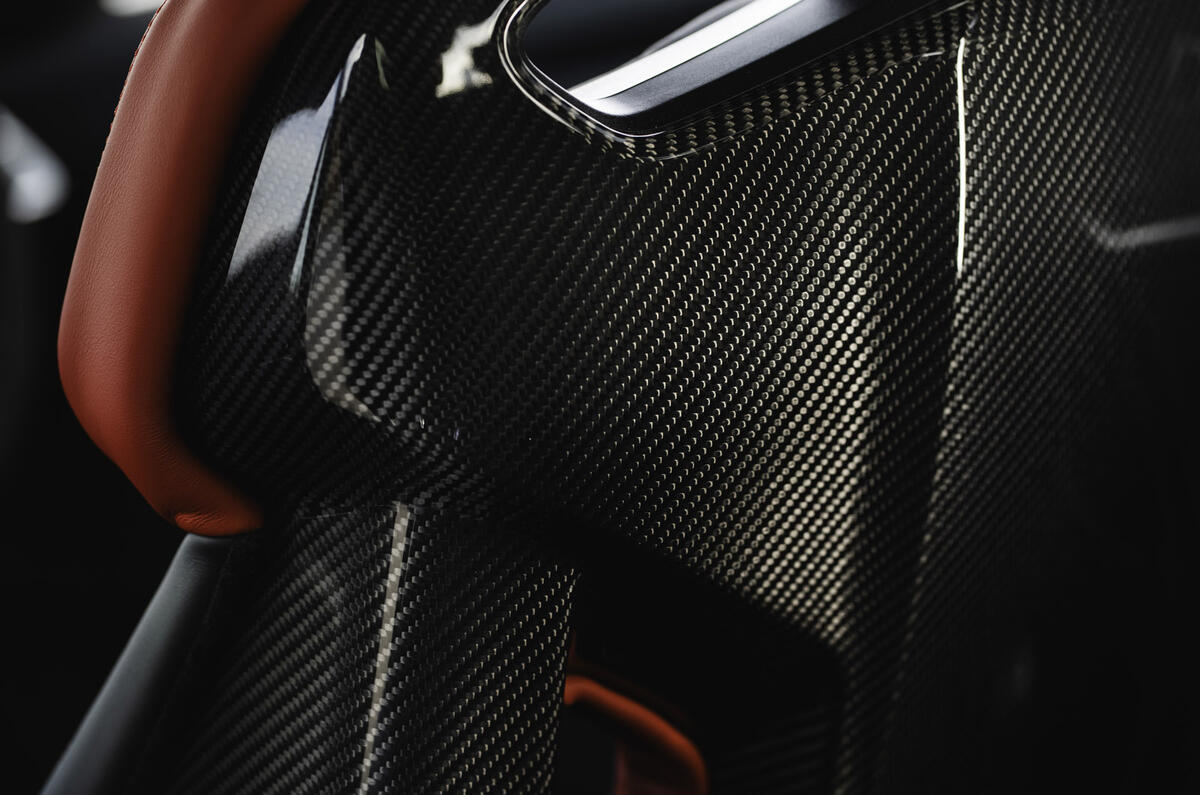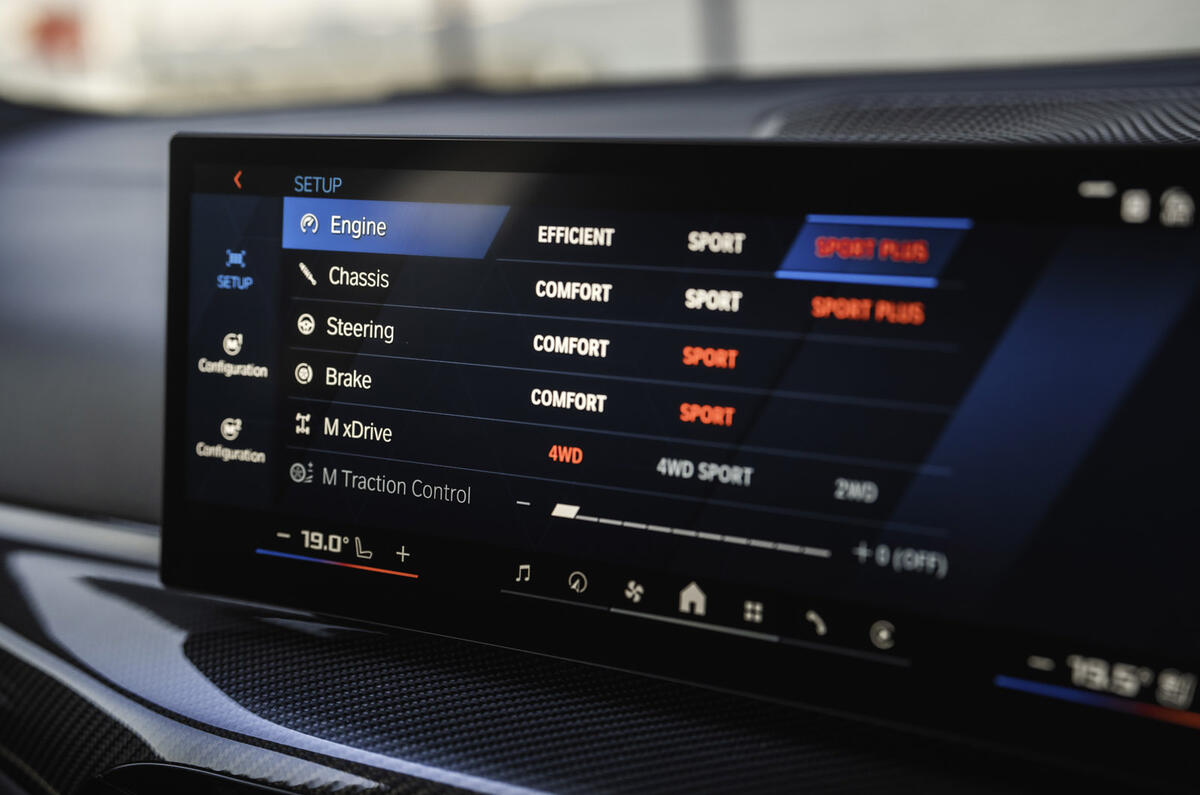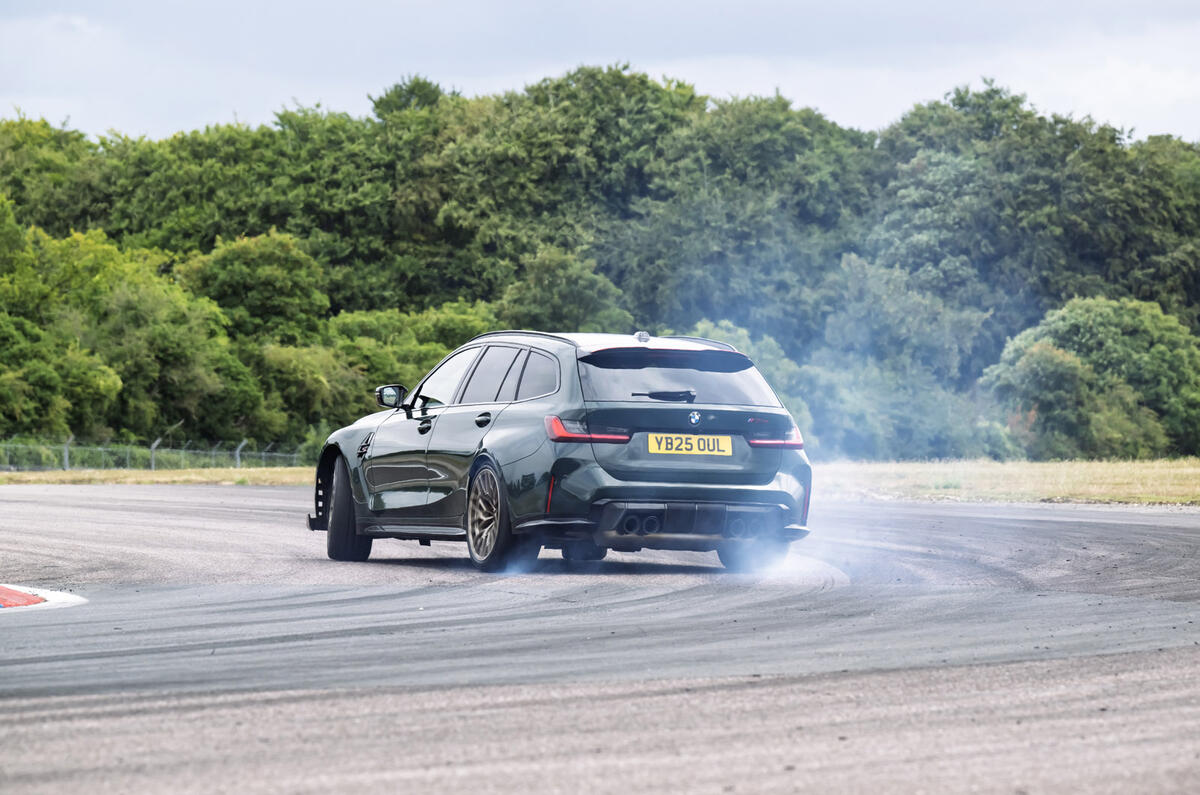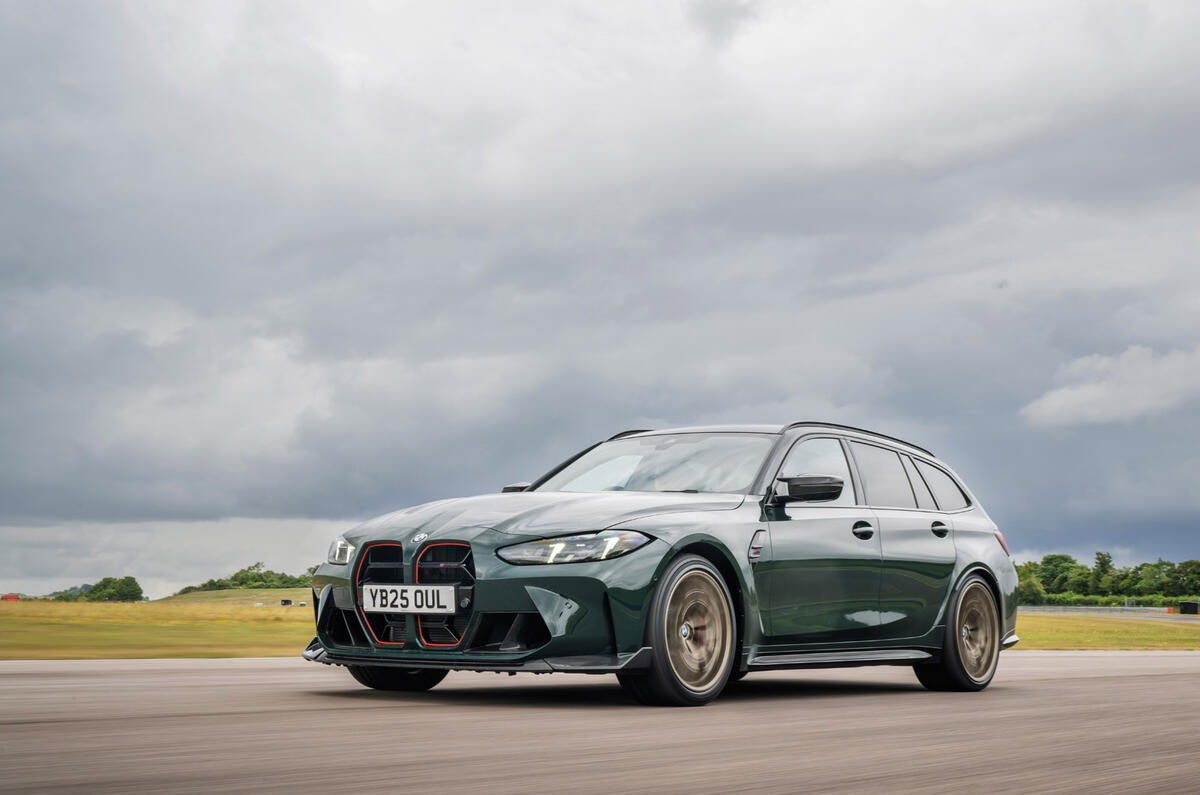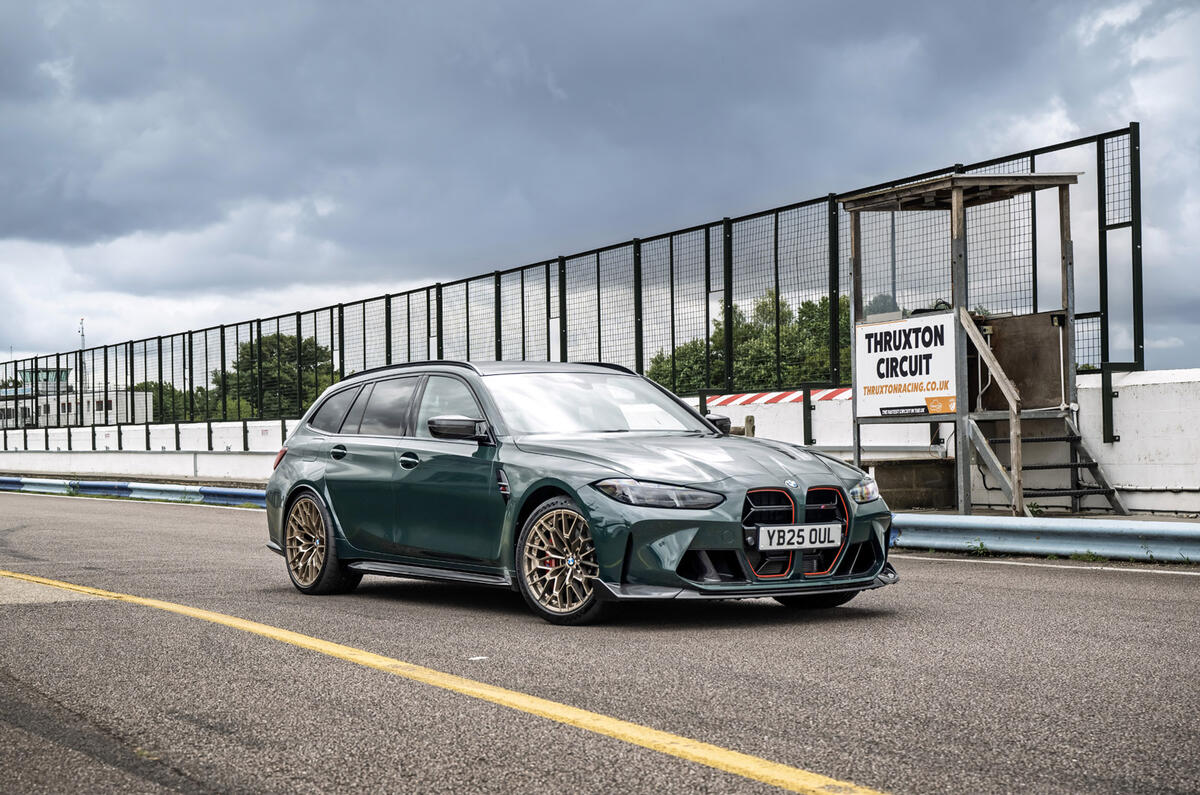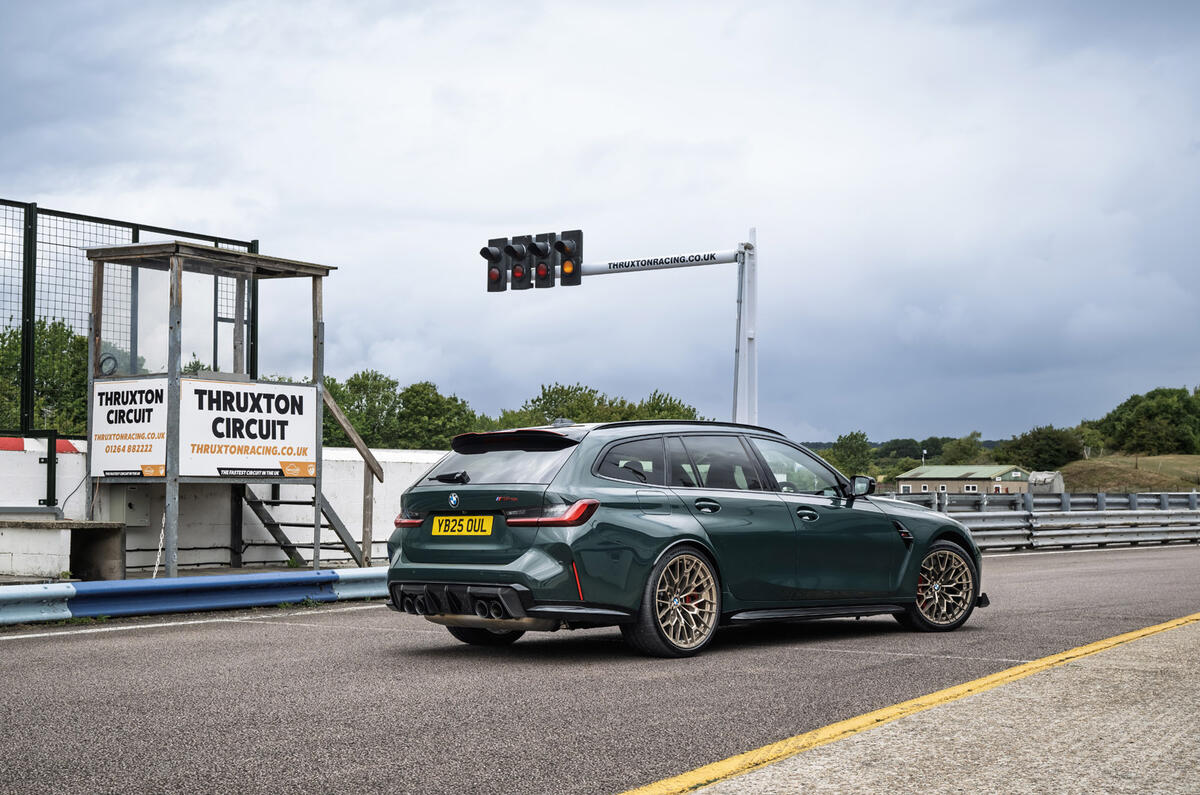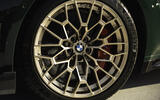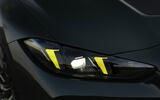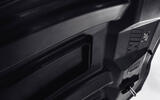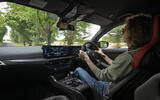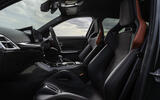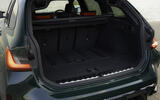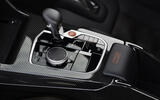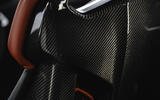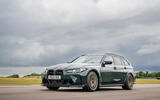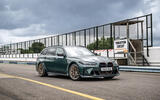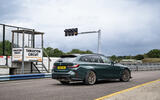Following simple 1+1=2 thinking, the BMW M3 CS Touring was inevitable.
After all, there have been hardcore CS versions of the M3 saloon and the M4 coupé, so logic dictates that the same carbonfibre canards, gold wheels, added power and chassis tweaks would be applied to the M3 estate. Then again, exceptions like the kerb-hopping Volvo 850 BTCC car aside, track-ready estates have always been a rare thing, probably because the combination of extra weight and practicality seems incompatible with pure performance. Even Mercedes-AMG has always chosen coupés as the bases for its Black Series cars.
But actually, I’d argue that an estate makes total sense here. No modern M3 or M4 is particularly light. The standard M3 saloon (which these days always comes with xDrive four-wheel drive in the UK) weighs 1780kg, so whether you add 85kg to make it an estate or subtract 15kg by way of various carbon bits (the rear seats remain in place) to make it a CS, are you really going to notice?
What you will notice is how much easier it is to stuff a spare set of wheels and a trolley jack into the back of an estate than it is with a saloon or a coupé. It is at once track car and support vehicle – surely the pinnacle of efficiency.
New BMW M3 CS cars in stock




